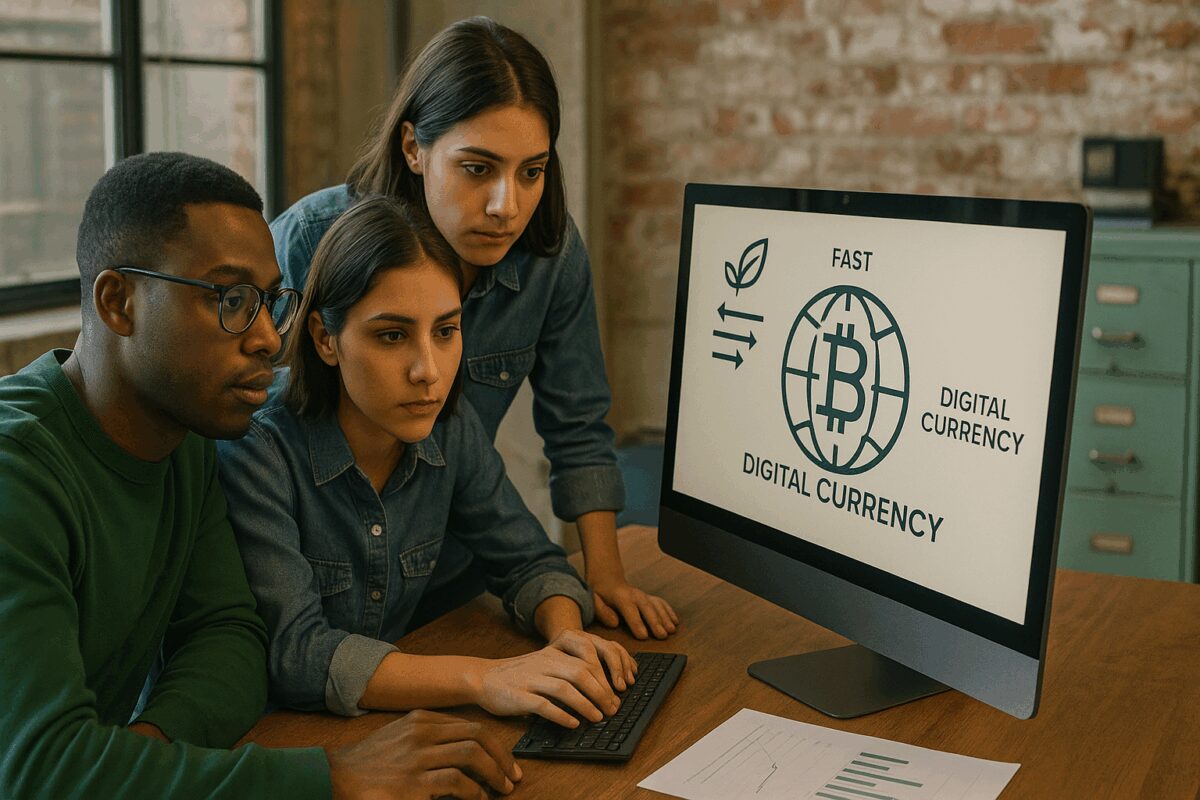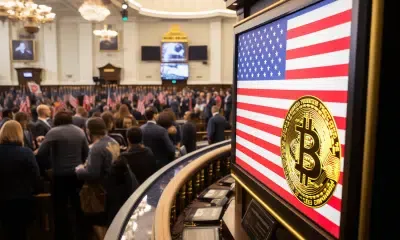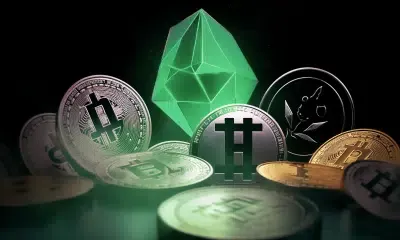
XRP’s origin isn’t the romanticized image of a coder’s solo, late-night breakthrough; instead, it’s more like a multi-scene drama with distinct personalities, shifting concepts, and a powerful ambition to craft something quite different from Bitcoin. This digital currency, which would go on to drive some of Ripple’s products, was born from a collective yearning for quicker, more environmentally friendly digital finance. But when was XRP created, and how did its journey begin?
You can find the earliest inklings of the idea with Ryan Fugger, a web developer from Canada, who, as far back as 2004, introduced RipplePay. Now, this wasn’t XRP; it was a system allowing people to grant each other credit lines—essentially IOUs—within circles of trust. Fugger’s initial dabbling in how value could move through trust networks did lay down some of the philosophical bedrock.
The direct path to XRP truly started forming in the early months of 2011. Jed McCaleb, who’d already gained recognition in crypto circles for founding the Mt. Gox Bitcoin exchange, began thinking about a digital money that could sidestep Bitcoin’s notoriously power-hungry mining. He imagined a smarter, more sustainable way for transactions to be confirmed. McCaleb even put these initial thoughts out on a forum in May 2011, in a message titled “Bitcoin without mining.”
By that same year, McCaleb had connected with David Schwartz, a well-regarded cryptographer, and Arthur Britto, who knew his way around distributed systems. This group of three, captivated by Bitcoin’s possibilities yet keenly aware of its shortcomings, especially regarding payment speed and energy draw, started designing the future XRP Ledger (XRPL). Their primary goal from the get-go was a system built for payments.
Crafting the XRP Ledger’s core code involved Schwartz, McCaleb, and Britto working closely together from 2011 through the middle of 2012. Arthur Britto is often recognized as the one who wrote the specific code that brought the first 100 billion XRP tokens into being around June 2, 2012. David Schwartz, who is Ripple’s CTO today, often calls this date XRP’s “birthday.” Interestingly, some early whispers suggest the tokens were first called “XNS.” A critical glitch in its very early days, however, means the XRP Ledger’s publicly traceable history only starts at ledger 32,570, dating from December 2012.
Once the XRP Ledger was up and running with its 100 billion XRP tokens in existence, the next step was to build a company around this new tech. In September 2012, Chris Larsen, an entrepreneur known for his fintech successes like E-LOAN and Prosper, teamed up with McCaleb. They co-founded OpenCoin Inc., bringing David Schwartz on as Chief Cryptographer and Arthur Britto as an advisor.
A vital decision shaped XRP’s supply: the XRPL’s creators handed over 80 billion XRP to OpenCoin. The founders, McCaleb, Larsen, and Britto among them, kept the other 20 billion XRP. How these tokens were split has often fueled conversations about XRP’s market behavior and Ripple’s sway.
Jed McCaleb didn’t stay long at the company he helped start, leaving Ripple in 2013 apparently because of differences over where the company should head. After his departure, OpenCoin changed its name to Ripple Labs in September 2013, linking the company more obviously to the protocol, before eventually just becoming Ripple.
Untangling the Global Payments Knot
Those who conceived the XRP Ledger and XRP weren’t merely trying to launch another cryptocurrency; they aimed to fix real, pressing issues within the worldwide financial setup. Back around 2011, moving money internationally was a notoriously slow, costly, and murky business. Too many hands in the pot meant hold-ups and jacked-up fees. Bitcoin, though groundbreaking, didn’t seem like the right tool for this specific job to the XRPL’s designers, mainly because of its energy demands and slow transaction pace.
They imagined a decentralized, open-source blockchain specifically tailored for payments. The XRPL was built from the ground up to make global money transfers fast, affordable, and dependable. While Bitcoin was largely talked about as a way for individuals to store and send value, XRP and its ledger were, almost from day one, geared more towards businesses and institutions, looking to improve, not completely overhaul, the existing financial world.
XRP was designed to be useful in several ways:
* It could act as a bridge currency, doing away with the need for expensive pre-funded accounts (nostro/vostro) and smoothing out international transactions between different traditional currencies.
* It aimed for efficient settlement, with transactions confirming in just 3-5 seconds, a world away from old-school systems.
* It would enable On-Demand Liquidity (ODL), letting financial institutions tap into real-time liquidity using XRP.
* The XRPL itself supported tokenization, meaning it could handle the creation of various assets, not just XRP.
* It even included a Decentralized Exchange (DEX), built right into the ledger, for trading these various created assets.
No single document like Bitcoin’s famous whitepaper defines XRP. Instead, early online discussions, such as McCaleb’s “Bitcoin without mining” post, and a subsequent paper titled “The Ripple Protocol Consensus Algorithm,” which David Schwartz, Noah Youngs, and Arthur Britto co-wrote, laid out the unique consensus method that avoided energy-draining mining.
A Look Inside: XRPL’s Technical Design
The XRP Ledger’s design intentionally diverged from Bitcoin’s. It was imagined as a distributed ledger that wouldn’t need mining. All 100 billion XRP came into existence right at the start – a “pre-mine” that has sparked endless discussion ever since. A hefty portion of this, 80 billion XRP, went to OpenCoin (which became Ripple).
From a technical standpoint, the XRPL employs an account-based system, unlike Bitcoin’s UTXO approach. It was engineered for speed, claiming up to 1,500 transactions a second, with confirmations taking only 3-5 seconds, plus the flexibility to turn nearly any asset into a token.
The heart of it is the XRP Ledger Consensus Protocol (XRPLCP), once known as the Ripple Protocol Consensus Algorithm (RPCA). Rather than mining, trusted servers known as validators vote on whether transactions are legitimate and in what order they should be processed. Each server keeps a Unique Node List (UNL) – a list of validators it trusts won’t conspire. The agreement process happens in rounds: servers collect valid transactions, suggest them as possible sets, then share and compare these sets with the validators on their UNL before voting. Transactions that get a strong majority (initially 80%) are confirmed and recorded on the ledger. This system, designed to withstand certain types of failures (Byzantine Fault Tolerant), could handle up to 20% of validators on the UNLs being unreliable.
This entire setup was a direct attempt to tackle what its creators saw as Bitcoin’s flaws: sluggish transaction speeds, unpredictable costs, problems with scaling, and massive energy use. The “waste inherent in mining” deeply concerned the XRPL’s founders, who also flagged the dangers of 51% attacks that Proof-of-Work networks could face.
The Company: From OpenCoin to Ripple’s Modern Form
The organization we know as Ripple today has a backstory nearly as intricate as the digital asset it promotes. While Ryan Fugger’s 2004 RipplePay provided some early conceptual kindling, the path to the current Ripple truly started with Jed McCaleb, David Schwartz, and Arthur Britto developing the XRP Ledger in 2011.
By June 2012, the XRPL was operational, and its 100 billion XRP tokens existed. Then, in September 2012, Chris Larsen joined McCaleb and Britto to establish NewCoin, which almost instantly became OpenCoin Inc. OpenCoin subsequently bought RipplePay’s assets. Their goal was clear: find practical uses for the XRPL and XRP, with a laser focus on overhauling how money moves around the globe.
The XRPL’s creators gave 80 billion XRP to OpenCoin, planning for this sum to cover operational costs, nurture the ecosystem’s growth, and ensure there was enough XRP available for trading. The co-founders and early backers kept the other 20 billion XRP. Reports indicate Chris Larsen and Jed McCaleb each initially got 9.5 billion XRP, while Arthur Britto received 1 billion.
In April 2013, OpenCoin attracted initial investment from well-known venture capital firms like Andreessen Horowitz and Lightspeed Venture Partners. This was quickly followed by a seed funding round in May 2013, which included Google Ventures and IDG Capital Partners, raising about $9 million. That same month, the company bought SimpleHoney to help make virtual currencies more popular.
To forge a clearer identity, OpenCoin renamed itself Ripple Labs, Inc. on September 26, 2013. Disagreements about the company’s path, with McCaleb supposedly pushing for a more open, Bitcoin-esque strategy and Larsen zeroing in on bank partnerships, resulted in McCaleb leaving in mid-2013. He later went on to create Stellar (XLM). Finally, on October 6, 2015, the company trimmed its name down to just Ripple.
Even though Ripple contributes significantly to the XRPL and uses XRP in offerings like Ripple Payments (an evolution of On-Demand Liquidity), the ledger itself is open-source. To encourage more decentralized development, the independent XRPL Foundation came into being in September 2020. In a move to make the supply more predictable, Ripple put 55 billion of its XRP into a cryptographically protected escrow in December 2017, from which 1 billion XRP is released monthly, with any unused amounts going back into escrow.
The Birth of 100 Billion XRP: A Deliberate Act
Choosing to create all 100 billion XRP in one go back in 2012 was a conscious engineering decision, neatly avoiding the continuous energy demands of mining. Ripple’s CTO, David Schwartz, mentioned the number itself was picked because it was easy to grasp, could be divided many times (fitting neatly into a 64-bit integer), and seemed right for enabling worldwide payments. Having a fixed supply also meant a predictable level of rarity.
Transaction fees on the XRP Ledger don’t go to anyone; they’re “burned” or destroyed, which over time makes XRP a deflationary asset. While the very first records of the ledger (roughly the initial 32,569 ledgers) were apparently lost due to an early software flaw, Schwartz has stated that the original ledger had no transactions and the total 100 billion XRP supply was set from the very beginning.
XRP’s Lingering Shadows: Debates and the SEC Showdown
XRP’s path has been constantly marked by arguments over how centralized it is, the sizable “rewards” for its founders, and Ripple’s own massive XRP reserves. Detractors contend that Ripple’s sway over the XRP Ledger’s evolution and the historical makeup of its validator network suggest a system controlled from the center. Ripple counters this, highlighting the ledger’s open-source nature and the growing diversity of its validators.
The 20 billion XRP set aside for its founders, especially the large portions for Larsen and McCaleb, has drawn significant criticism. McCaleb’s methodical selling of his XRP holdings over many years, alongside large, sometimes inactive wallets tied to Larsen, frequently surface in community debates.
Ripple’s own considerable XRP stockpile, even with the escrow arrangement, continues to be a sensitive topic. Ripple has consistently pushed back against accusations of manipulating the market through large XRP sales, and it releases quarterly reports on the XRP market. By early 2025, Ripple was said to hold roughly 4.56 billion XRP directly, with a much larger sum remaining locked in escrow.
The most significant hurdle by far has been the lawsuit brought by the U.S. Securities and Exchange Commission (SEC) in December 2020. The SEC claimed that Ripple, Larsen, and CEO Brad Garlinghouse had conducted an unregistered securities sale by offering XRP, raising more than $1.3 billion. This legal action threw XRP’s standing with regulators into disarray.
A crucial turn came in July 2023 when a U.S. District Court judge decided that while Ripple’s direct sales of XRP to institutions were indeed securities offerings, its programmatic sales of XRP on public exchanges to everyday investors were not. The SEC’s charges against the executives were subsequently dropped. Although the legal wrangling over penalties for the institutional sales dragged on, by early 2025, there were indications the wider case might be nearing a resolution, giving XRP’s market outlook a considerable lift.
Market Pulse at XRP’s Debut: A Shifting World
XRP was thought up around 2011 and officially came into being in June 2012, a time when global finance was quite unsettled and the cryptocurrency world was just starting out. The planet was still coping with the aftermath of the 2008 financial crisis, and the Eurozone was deep in its own sovereign debt problems. Economic expansion was slow, job numbers were poor, and central banks kept money policies loose.
Bitcoin almost completely dominated the cryptocurrency landscape then. The support systems were basic, and few people outside of a small, tech-savvy group even knew about crypto. It was against this backdrop of inefficient old-world finance and Bitcoin’s own dawning issues (like its energy appetite and scaling troubles) that XRP was conceived as a payment tool built for a specific purpose, aiming for institutional use right from the start. This particular strategic direction, however, also fueled the ongoing arguments about just how decentralized it truly was compared to Bitcoin.
XRPL’s Growth: Changing and Broadening Horizons
Since it first went live in 2012, the XRP Ledger has changed quite a bit. Important updates to its rippled software have brought in many new capabilities. Version 2.0, released in January 2024, introduced features for bridging to other blockchains (XLS-38) and decentralized identity (XLS-40 DID). Later updates have concentrated on things like Multi-Purpose Tokens (MPTs), digital credentials, and improving its Automated Market Maker (AMM) systems. A sidechain compatible with the Ethereum Virtual Machine (EVM) is also a significant ongoing project, intended to make the XRPL more attractive for decentralized finance (DeFi) and NFT initiatives.
How the ledger is governed has also shifted, with the XRPL Foundation (which re-established itself in France in November 2024) playing a role, and continuing talks about moving towards a DAO (Decentralized Autonomous Organization) model to get the community more involved.
XRP Today: A Complicated View
XRP regularly sits among the top cryptocurrencies, often praised for its transaction speed and low costs. Its price, though, has been famously unpredictable, reacting strongly to news about Ripple and the SEC lawsuit. While financial firms like Tranglo and SBI Remit have adopted it for cross-border payments, especially in places like Japan and Southeast Asia, getting major global banks on board has been a slower process, held back by unclear regulations and the difficulties of integration.
The “XRP Army,” a very vocal group of fans, passionately promotes its usefulness. Meanwhile, critics keep bringing up worries about centralization and the “banker’s coin” label. However, recent positive turns in the SEC case, along with talk about a potential XRP ETF, have brought a fresh wave of optimism.
The drive to create XRP stemmed directly from what its founders saw as shortcomings in the early digital currency scene and clunky processes in traditional banking. Its evolution from a mere concept in 2011 to a prominent, if often debated, force in the digital asset arena by 2025, charts a course marked by fresh ideas, careful corporate guidance, and persistent regulatory battles. The fundamental goal—to enable quick, dependable, and cheap movement of value—still defines its character.




